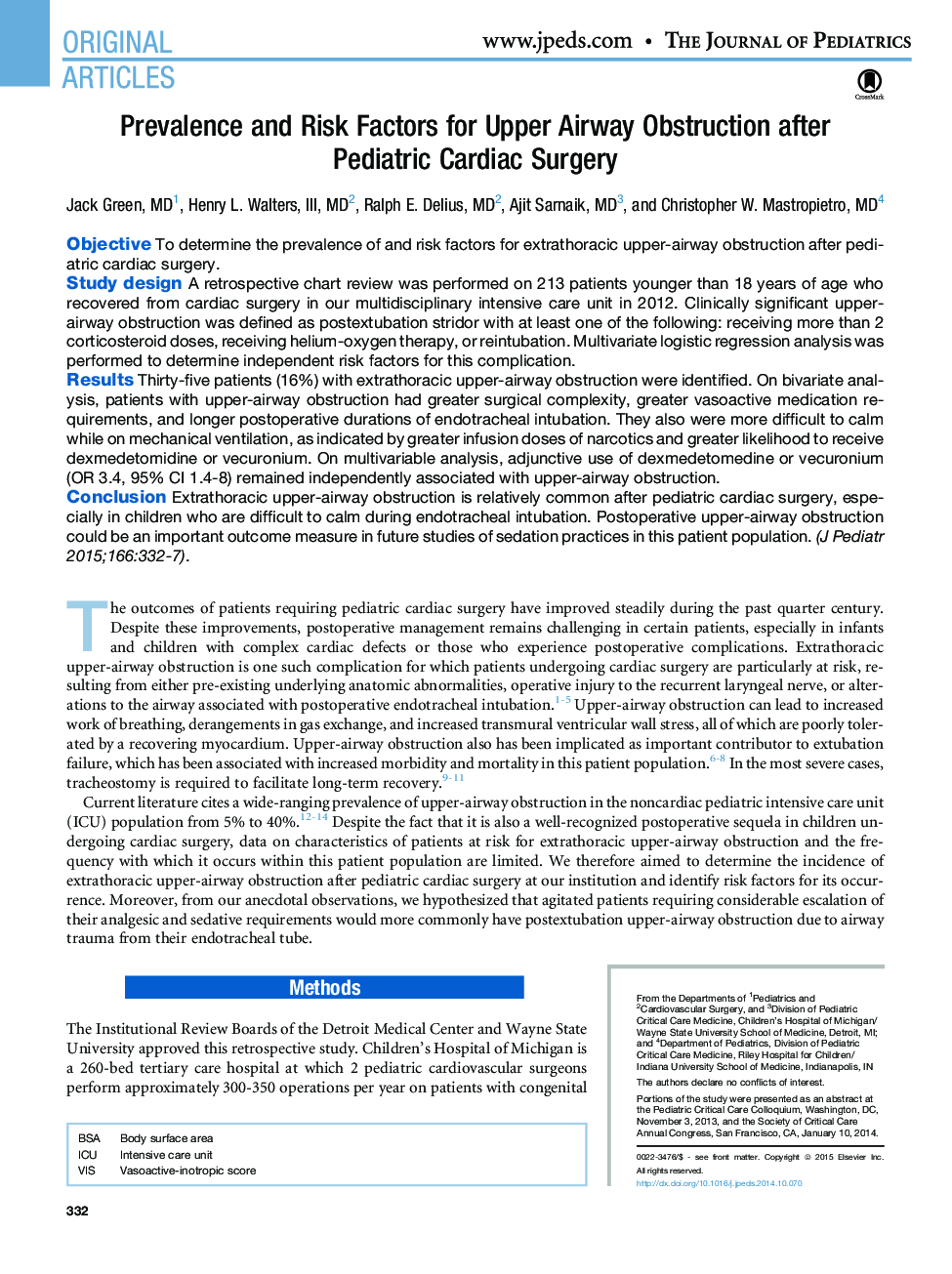| Article ID | Journal | Published Year | Pages | File Type |
|---|---|---|---|---|
| 6221705 | The Journal of Pediatrics | 2015 | 6 Pages |
ObjectiveTo determine the prevalence of and risk factors for extrathoracic upper-airway obstruction after pediatric cardiac surgery.Study designA retrospective chart review was performed on 213 patients younger than 18Â years of age who recovered from cardiac surgery in our multidisciplinary intensive care unit in 2012. Clinically significant upper-airway obstruction was defined as postextubation stridor with at least one of the following: receiving more than 2 corticosteroid doses, receiving helium-oxygen therapy, or reintubation. Multivariate logistic regression analysis was performed to determine independent risk factors for this complication.ResultsThirty-five patients (16%) with extrathoracic upper-airway obstruction were identified. On bivariate analysis, patients with upper-airway obstruction had greater surgical complexity, greater vasoactive medication requirements, and longer postoperative durations of endotracheal intubation. They also were more difficult to calm while on mechanical ventilation, as indicated by greater infusion doses of narcotics and greater likelihood to receive dexmedetomidine or vecuronium. On multivariable analysis, adjunctive use of dexmedetomedine or vecuronium (OR 3.4, 95% CI 1.4-8) remained independently associated with upper-airway obstruction.ConclusionExtrathoracic upper-airway obstruction is relatively common after pediatric cardiac surgery, especially in children who are difficult to calm during endotracheal intubation. Postoperative upper-airway obstruction could be an important outcome measure in future studies of sedation practices in this patient population.
